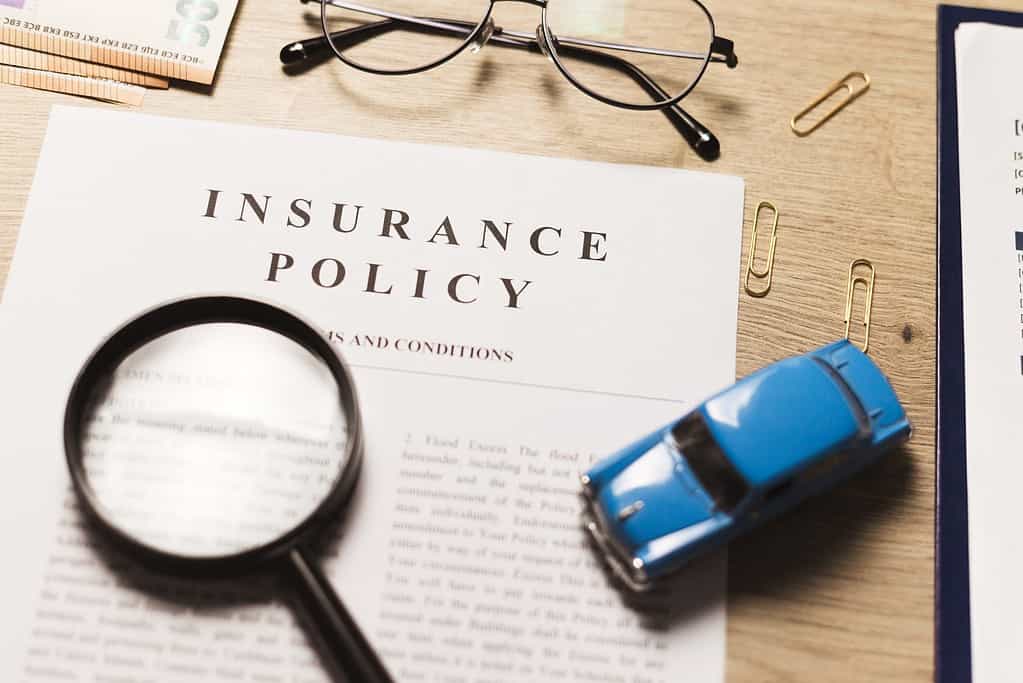Accidents, theft, and damages are all unforeseeable issues that can happen to any car owner. Can you imagine the financial burden that any of these eventualities can cause you?
That’s where car insurance comes in- to provide you with financial protection when on the road. But car insurance comes at a price!
So, whether going for basic liability insurance or full auto coverage, it’s good to make sure you get the best deal.
Wondering how to lower car insurance premiums? Read on to learn how you can save on car insurance costs.
How To Lower Your Car Insurance Premiums
The convenience you enjoy after buying a car comes at a price. Other than routine maintenance, you are required to pay for car insurance. How can you keep the costs manageable?
Here are six tips on how to get lower car insurance.
1. Compare Premiums
Every general insurance company is purportedly offering online covers. Auto firms also provide ‘free’ insurance but don’t let this fool you.
It’s free for the first year only, and you can’t even customize it to suit your needs. The insurance will not even cover your car if you make some modifications to it.
So, shop around and compare premiums when choosing your auto insurance.
2. Increase Your Deductibles
A deductible is an amount of money you have to pay before insurance can take liability in case of an accident, theft or other damage to your car.
One way of lowering your car insurance premium is by raising your deductibles. But don’t increase it to an amount you can hardly pay comfortably. Spending too much waters down the purpose of insurance anyway.
3. Avoid Small Claims
After buying car insurance, you’re entitled to a no-claim bonus (NCB) for every year that passes without making a claim.
It’s advisable to avoid bothering the insurer for minor dents, making a claim will render you ineligible for NCB when renewing your insurance.
4. Install Anti-theft Aids
The safety of your car is not something you can afford to overlook. Purchasing a gear lock or anti-theft alarm could lower your insurance premium by 5 percent!
You can also get special discounts if you are affiliated with the WIAA or related agencies.
5. Ask About Group Insurance
Some insurance companies offer discounted premiums for those in group plans either from employers, business and alumni groups, et cetera.
Consider asking your employer or clubs you’re a member of to see if you could seek a group plan.
6. Reduce Coverage on Older Cars
Have you considered getting rid of collision and comprehensive insurance on your older auto? If the value of your vehicle is not more than 10 times the insurance premium, then buying the coverage makes no economic sense.

If you don’t know how much your car is valued, you can visit auto dealers or your bank or look it up online. You may then review your coverage during your next renewal to ensure that your insurance needs are catered to.
What Impacts the Price of Car Insurance?
From the type of coverage to your driving record to your age, several factors influence the amount you will pay for car insurance. No single insurance company uses the same parameters as the others.
So here are ten factors that commonly determine the price of car insurance.
1. Driving Record
This is self-explanatory. A clean driving record translates to lower insurance premiums.
Conversely, a record of more accidents or traffic violations will have you paying more than you otherwise would if your driving record were clean. Drivers without an insurance track record also pay more.
2. Location
Did you know that safety and security differ based on location? Thanks to high vandalism, accidents, and theft rates, drivers in urban areas pay higher rates on car insurance than those in remote areas.
Even where you pack your car (whether on the street or in a secure garage) and anti-theft devices installed in your car could influence the bottom line.
3. Age
It is common knowledge that older drivers cause fewer accidents than younger drivers due to their experience.
Your insurance company will charge more if a teenager or younger person below the age of 25 will be driving your car.
4. Gender
Statistics show that women rarely get into accidents. Very few female drivers get into driver-under-the-influence accidents (DUIs).
Even more important is that women are involved in minor accidents, unlike men.
When insurance companies add all these aspects, they charge women less for car insurance coverage than their male counterparts.
5. Credit Score
This is a significant rating factor, yet it’s the most overlooked. Statistical data shows that drivers with poor credit scores tend to file for claims more than those with better credit.

At the same time, when these drivers with a poor credit score file claim, theirs’ tend to be more expensive than claims made by drivers with good credit!
That’s why insurance firms charge higher rates for drivers with lower credit levels.
6. Annual Mileage
The higher the annual mileage, the higher your insurance premiums will be.
There is a $92 national difference in yearly premiums between motorists who drive fewer than 7,500 miles and those who drive 15,000 miles or more per year.
The reasoning behind this difference is that a car driven more frequently is more prone to accidents.
7. Type of Vehicle
A new sports car attracts a higher insurance premium than an older Civic.
The insurance company will charge you more for a car that will cost them more to replace.
8. Insurance Company
This is the most significant factor influencing car insurance costs.
Rates differ from one company to another, and although other factors might come into play, you might be paying more because your chosen company is generally expensive.
So, compare quotes from different companies based on your rating profile to find one suits you.
9. Vehicle Ownership Status
There are three categories of car ownership: leased, financed, and owned. Your ownership status will determine the premiums you pay.
So, if your car is paid off, is insurance cheaper? No. Owning your car (by paying off the loan) won’t change your insurance rates.
But it gives you a more comprehensive range of choices, such as higher deductibles and liability-only policy, which can help lower your coverage costs.
10. Insurance History
If this is your first car and your first time buying an insurance policy, your rates will be higher. New cars attract higher rates because insurance companies don’t have enough information to assess your risk.

You may also pay higher rates because of a ‘coverage gap’. A coverage gap is when you stay without car insurance; for example, your car insurance agency cancels you for non-payment.
To avoid a coverage gap when you are not covered, it’s advisable to go for non-owner car insurance.
How Much Should I Expect to Pay?
Unfortunately, there’s no definite answer to this question. The amount you pay will depend on a variety of factors. But here’s what to look at when estimating the amount you should be paying for car insurance.
Average National Costs
The national average cost of car insurance is approximately $1600 per year. But beware, you could pay more than $100 per month for auto insurance. It’s possible to pay up to $135 monthly despite being a middle-aged person with plenty of experience and good credit.
Put all factors in mind when calculating national average costs. After all, different insurance companies have various coverage options.
Average Cost Level
Most individuals prefer buying coverage far beyond the minimum coverage required by law. The average policy is between $50,000 to $100,000 for bodily injury coverage and $50,000 for property damage cover and comprehensive insurance with deductibles of up to $500.
Some states and lease agreements may even require you to have GAP insurance.
Car Insurance Coverage by State
Zip code dictates the car insurance premiums and minimum coverage requirements. That means your state of residence will primarily affect your insurance.
Maine is the cheapest state for insurance because of the low risk for drivers. Full coverage will cost you less than $900 annually here. Idaho and North Carolina have affordable coverage too.

Michigan is the most expensive state for insurance, with premiums of more than $4000 yearly for comprehensive coverage. New York and Louisiana are equally costly.
If you can’t afford auto insurance, your state of residence could probably be the problem.
Final Verdict
No one wants to pay more for an auto insurance premium. It’s fortunate enough that there’s so much you can do to keep your insurance rates affordable. The tips mentioned above should get you moving in the right direction.
Always drive safely and follow traffic rules, and you’re all good. Remember that you are one claim away from having your insurance rates increased.

